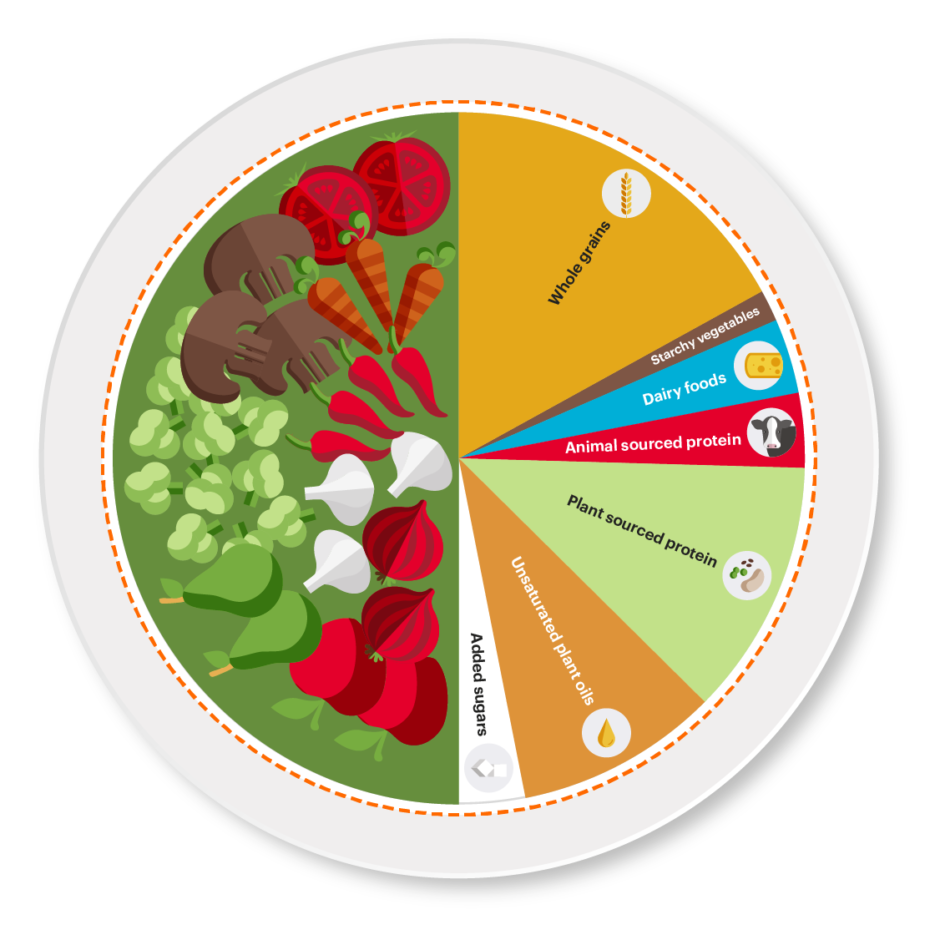
It is vital that children understand nutrition. It is possible to introduce new foods to children in small quantities. As an example, children can start by eating a small amount of broccoli. They will eventually become more fond of a particular food if they are satisfied with it. However, you should avoid giving them too much food at one time.
A newsletter from a pediatrician is a great resource for parents looking for nutrition information. They also offer research articles and seminars. The newsletter can be signed up as well. You can sign up for the newsletter and receive healthy eating posters for schools. It is one eight federally funded centers that are dedicated to improving the nutrition of children. The Baylor College of Medicine along with the Children's Hospital run the center. The guide offers links to information that will help health professionals. Separate briefs provide information for families and schools.

Healthy fats are important for healthy eating habits. These fats are found primarily in nuts, seafood, and vegetables. Choose low-fat, fat-free varieties of dairy products for children and limit fried foods. You can also choose to include grains in your child's diet. Whole-wheat bread is best, but you can also try brown rice or whole-wheat bread. Using white bread as a substitute for grains can cause a child's body to gain weight or develop blood sugar issues.
Another important aspect of children’s nutrition is fruits. While fresh fruits are the best, dried fruits can be healthy as well. Remember that dried fruits can have a high amount of calories. Check the nutrition labels for packaged foods. You can choose a variety of fruit and vegetables based on their age and liking. If you're not sure what fruits your child likes, you can mix them in small quantities with limited sugar.
Children's nutrition is especially important for academic and physical success. Children's health is directly related to their diet, which is vital for their development. Having the right nutrition is important for a child's development. By eating the right foods, a child's body will become stronger and healthier. You should make sure that they get enough nutrients to grow healthy. This is a vital part of your child’s diet.

When it comes to children's nutrition, the best way to start is to offer them nutritious foods as part of every meal. These foods include colorful fruits and veggies, which should be accompanied with healthy foods. For your child’s health, it is important to eat a balanced diet. A child's food should include lots and plenty of vegetables and fruits. You can meet their nutritional needs by including fruits and vegetables in your meals.
FAQ
What lifestyle is most healthy?
You can live a healthier lifestyle if you eat healthy food and exercise regularly. You will live a long and happy life if you adhere to these guidelines.
Starting small can make a big difference in your diet, and even your exercise routine. You can lose weight by walking 30 minutes each day if you are looking to lose weight. For more activity, you can try swimming or dancing. You could also join an online fitness program like Fitbit or Strava that tracks your activity levels.
How often should I exercise
Fitness is key to a healthy lifestyle. There is no time limit on how much you should exercise. Finding something you enjoy is key. Stick with it.
If you are working out three times a weeks, aim to do 20-30 minute of moderate intensity. Moderate intensity means you'll still be breathing hard after you've finished. This type of exercise burns approximately 300 calories.
For those who prefer to walk, you can go for 10-minute walks four times a week. Walking is low-impact, easy on your joints, and it's also very gentle.
You can also run for 15 minutes, three times per week. Running is a great exercise to build muscle tone and burn excess calories.
Start slowly if you aren't used to doing exercise. Begin with 5 minutes of cardio every other day. Gradually increase the duration until you reach your goal.
Is being cold bad for your immune system?
Cold causes a decrease in immune system strength. This is because white blood cells are less effective at fighting infection. But, cold makes you feel better. Your brain releases endorphins that reduce pain.
What does it take to make an antibiotic work?
Antibiotics kill harmful bacteria. Antibiotics are used to treat bacterial infections. There are many different types of antibiotics. Some are taken orally, some are injected, and others are applied topically.
People who have been exposed are often given antibiotics. To prevent shingles, an oral antibiotic may be prescribed to someone who has had chicken pox. Penicillin might also be administered to someone with strep throat. This will help prevent the possibility of developing pneumonia.
Children should not be given antibiotics without the consent of a doctor. Children are at greater risk of developing side effects from antibiotics than adults.
Diarrhea is the most common side effect from antibiotics. Other possible side effects include stomach cramps, nausea, vomiting, allergic reactions, headaches, dizziness, and rashes. These side effects usually disappear once treatment has ended.
What are 10 healthy lifestyle habits?
-
Eat breakfast every day.
-
Don't skip meals.
-
Be balanced.
-
Drink plenty of water
-
Take good care of your body.
-
Get enough sleep.
-
Avoid junk food.
-
Daily exercise
-
Have fun!
-
Make new friends.
Exercise: Good and bad for immunity?
Exercise is good exercise for your immune system. When you exercise, your body produces white blood cells which fight off infections. You can also eliminate toxins from the body. Exercise can prevent diseases such as cancer and heart disease. Exercise also helps to reduce stress levels.
However, overtraining can damage your immune system. Exercising too hard can make your muscles sore. This causes inflammation and swelling. To fight infection, your body will produce more antibodies. The problem is that these extra antibodies can cause allergies and autoimmune disorders.
So, don't overdo it!
What is the problem of BMI?
BMI is the acronym for Body Mass Index. It measures body fat based upon height and weight. The following formula can be used to calculate BMI.
The weight of a kilogram divided by its squared height in meters.
The score is expressed as a number between 0 and 25. Scores of 18.5 and higher indicate overweight, while scores of 23 and higher indicate obesity.
A person who is 100kg and 1.75m tall will have a BMI 22.
Statistics
- WHO recommends consuming less than 5% of total energy intake for additional health benefits. (who.int)
- WHO recommends reducing saturated fats to less than 10% of total energy intake; reducing trans-fats to less than 1% of total energy intake; and replacing both saturated fats and trans-fats to unsaturated fats. (who.int)
- The Dietary Guidelines for Americans recommend keeping added sugar intake below 10% of your daily calorie intake, while the World Health Organization recommends slashing added sugars to 5% or less of your daily calories for optimal health (59Trusted (healthline.com)
- nutrients.[17]X Research sourceWhole grains to try include: 100% whole wheat pasta and bread, brown rice, whole grain oats, farro, millet, quinoa, and barley. (wikihow.com)
External Links
How To
What does the meaning of "vitamin?"
Vitamins can be described as organic compounds found in food. Vitamins aid us in absorbing nutrients from the food we eat. Vitamins cannot be produced by the body. They must be acquired from food.
There are two types: water-soluble and fat-soluble vitamins. Water-soluble vitamins dissolve quickly in water. Some examples include vitamin C,B1 and B2 vitamins (thiamine), B2 and riboflavin, B3 and B6 vitamins (niacin), folic acids, biotin, pantothenic acids, and cholesterol. Fat-soluble vitamins can be stored in the liver or in fatty tissue. You can find vitamin D, E K, A, beta carotene, and other fat-soluble vitamins.
Vitamins are classified according their biological activity. There are eight major groups of vitamins:
-
A - Essential for healthy growth and health maintenance.
-
C – essential for proper nerve function.
-
D - Vital for healthy bones and teeth
-
E - Required for good vision & reproduction
-
K - Required for healthy nerves and muscles.
-
P – vital for building strong bones.
-
Q – aids digestion of iron and iron absorption
-
R - Required for red blood cell production
The recommended daily allowance for vitamins (RDA) varies based on gender, age, and physical conditions. The U.S. Food and Drug Administration has established the RDA values.
For adults 19 years and over, the RDA of vitamin A is 400mg per day. Because it is essential for the development of the fetus, pregnant women should consume 600 micrograms per daily. Children ages 1-8 require 900 micrograms per day. Infants under one year of age require 700 micrograms per day, but this amount decreases to 500 micrograms per day between 9 months and 12 months of age.
Children between the ages of 1-18 need 800 micrograms per daily for obesity, while children overweight require 1000 micrograms. Children underweight or obese will need 1200 mg per day.
Children between 4 and 8 years old with anemia will need 2200 micrograms daily of vitamin C.
2000 micrograms per person is necessary for general health. Breastfeeding or pregnant women require 3000 micrograms per daily due to higher nutrient demands.
Adults over 70 years of age need 1500 micrograms per day since they lose about 10% of their muscle mass each decade.
Women who are pregnant and lactating need more nutrients than the RDA. Pregnant and breastfeeding women require 4000 micrograms each day during pregnancy and 2500 Micrograms each day after delivery. Breastfeeding mothers need 5000 micrograms per day when breast milk is being produced.